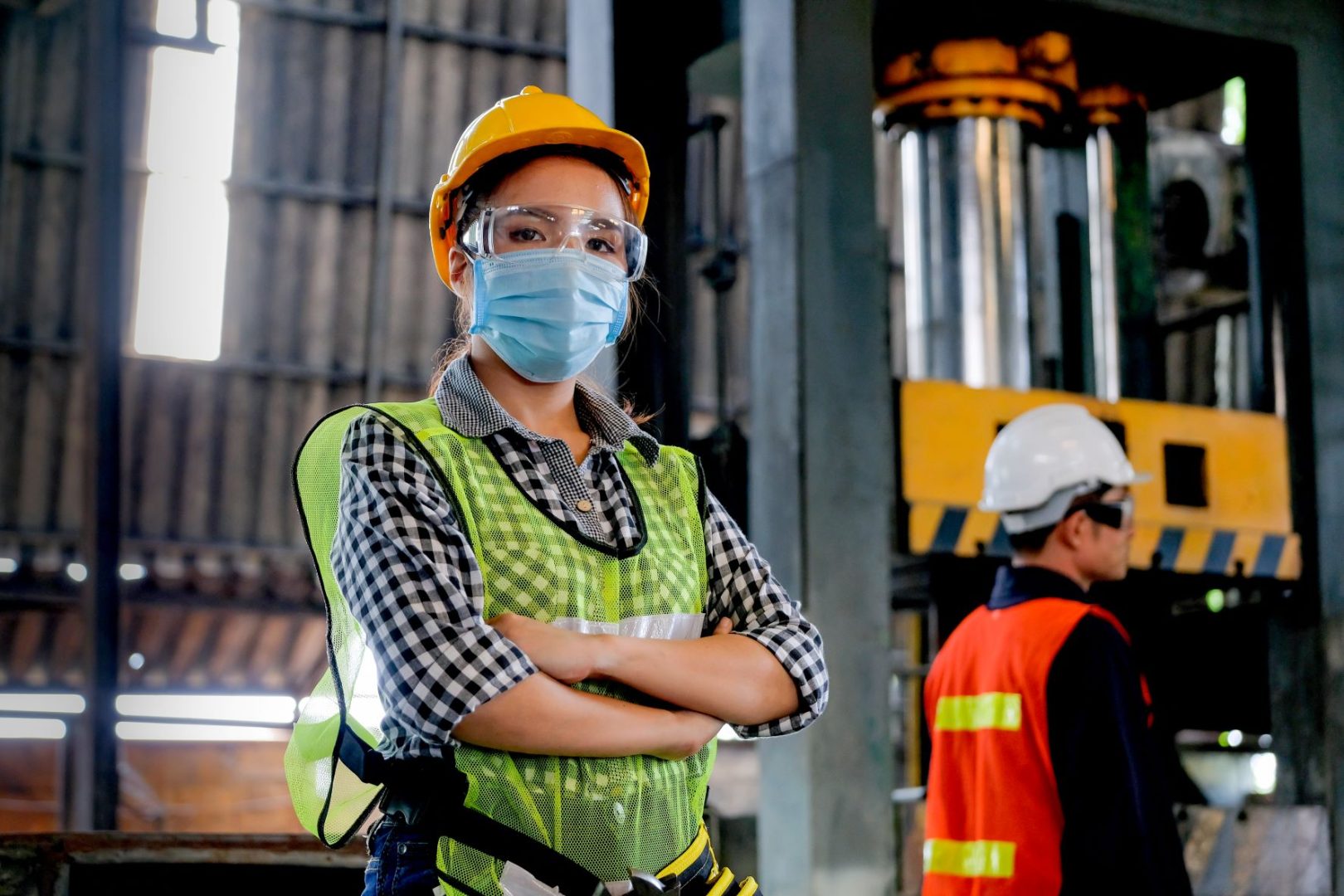The entire world was shocked when the COVID-19 pandemic took over every aspect of life in 2020. Employers adjusted their communication strategies and made remote work arrangements for their employees because of prevailing lockdowns.
Frontline employees were perhaps affected the most because many of them cannot carry out their responsibilities remotely. They have to be on site to get the job done but the pandemic made it impossible.
According to the American Community Survey 2017-18, essential workers constitute nearly 70 percent of all workers in the country which is a testament to their importance in keeping the economy stable and running. Now that the world is opening up again, it is important to provide frontline employees with all the necessary tools so they can transition back to on-site work smoothly.
Who are the frontline workers?
Frontline employees are the ones who have direct interactions with the customer of behalf of the organization. They are crucial for maintaining the reputation of the company because customers form their first impressions based on the treatment they receive. Frontline employees also have conflict management skills to ensure that both their peers and customers are satisfied.
As per the Department of Homeland Security (DHS), frontline or essential workers usually provide services or conduct operations needed for critical infrastructure viability. Industries with essential workers include but are not limited to medical and healthcare, information technology systems, telecommunications, defense, food and agriculture, transportation and logistics, law enforcement, and public works.
Examples of frontline employees include:
- Healthcare workers who cater to the well-being of patients every day. They are also responsible for communication with the patient’s family and relatives.
- Customer Service representatives who are in charge of customer orders, questions, complaints and cancellations.
- Sales representatives who regularly work to increase customer engagement, close sales and maintain customer relationships.
- Retail workers who are present on-site and communicate directly with customers when they are shopping.
Protocols after the pandemic
The COVID-19 pandemic is not yet over completely and frontline workers have to continue taking precautionary measures when they come back to work.
Hygiene
All frontline employees have to continue washing their hands diligently and practice safe hygiene so that the workplace remains safe from any possible infection. Every organization should release a list of hygiene protocols that employees are expected to follow.
Wearing masks
Frontline employees have to continue wearing masks until the ordeal of the pandemic is well behind us. The mask is a protective measure not just for the wearer but also the people they interact with. Most organizations have mandated the wearing of masks at the workplace both for employees and customers.
Avoiding contact
Contactless service became a cornerstone of the COVID-19 measures and it has to continue for a while longer. It is best for employees and customers to avoid physical contact to minimize the chance of any possible infection.
Remote management
The future of work has been left uncertain by the pandemic. However, it is undeniable that remote work will continue to rise in popularity. As a manager, you have to use latest technologies and practice effective communication to maintain a remote team.
1. Create an effective communication plan based on the team’s input
Select a suitable communication platform like Skype, Zoom, Google Meet, and Microsoft Teams that will make it easier to schedule video conferences. You can provide technical training to anyone unfamiliar with the chosen platform. Share a meeting schedule taking everyone’s convenience into account.
2. Offer necessary resources
If your employees need certain technological resources and equipment, help out by sending them over as a gesture of good will and support.
3. Establish guidelines for remote meetings
For remote meetings to be successful, you should lay down a few guidelines. You can ask them to log on 5-10 minutes before the meeting and resolve any technical issues. Introduce remote meeting etiquette that you would like them to follow and reiterate it from time to time.
4. Assigning and prioritizing tasks
Identify the tasks suitable for each employee and assign them via a project management tool. Create a to-do list and keep updating so that employees are updated about every development. Divide long-term projects into clear, short, achievable goals to ensure high productivity. Mark high-priority tasks separately and assign specific deadlines.
5. Monitor and motivate employees
You do not have to micro-manage your employees, but it is a good idea to set check-in milestones. You can also use time-trackers to ensure that they are putting in the required hours. Reiterate productivity expectations if you notice that they are slacking. Encourage employees to have transparent and honest one-on-one discussions with you in case they are having problems.
How can frontline employees cope with stress during COVID-19?
The COVID-19 pandemic negatively impacted the physical, mental and social well-being of frontline employees. The stress of transitioning to remote work, learning new technologies and working longer hours to compensate has taken a toll on frontline workers who now have reservations about returning to the workplace again.
Healthcare workers, in particular, are physically and mentally exhausted because they could never cease work. Employees must cope with the stress actively, so they do not end up taking any drastic actions.
Organizations, health administrators, and managers have to advise frontline employees on how to reduce stress and take care of themselves. For example, you can use Bites to connect with your employees by creating short motivating videos. Additionally, you can teach them the following ways to cope with stress and offer support.
· Steer clear of information overload
High exposure to media coverage can be dangerous because it can lead to the consumption of unverified medical information and rumors.
· Constant reminders
Frontline employees have to learn to let go of situations and challenges beyond their control. Instead, it might be beneficial to spend some time daily remembering their accomplishments of the day.
· Consult reliable sources
If you want to know more about COVID-19, consult reliable health authorities who will provide you with verified information.
· Seek professional help
Consulting a doctor, psychiatrist or therapist can be tremendously helpful because they can offer medical advice on handling stress and distress. In fact, many remote counseling services and psychological support hotlines are now available as part of the COVID-19 response.
· Be social
Sometimes it can be difficult to reach out to loved ones and share when going through a tough time, but it is important to stay connected and get their support.
· Healthy lifestyle
Following a healthy diet and exercising even for fifteen minutes will have noticeable benefits. Do not forget to get plenty of rest whenever possible.
· Make time for self
Frontline employees are always busy, and that is unlikely to change anytime soon. However, they should take out some time for themselves every day and do something they love. They can relax with the help of breathing exercises and meditation, be creative with a paintbrush, read books or have a cup of coffee with a friend.
· Frequent communication between employer and employee
Employees who feel comfortable reaching out to their manager in case of problems are more likely to feel less burdened and stressed.
Why should you use Bites?
Bites will help you keep frontline employees connected in the post-pandemic era by offering them video training and allowing them to engage in active discussions. Bites is a modern microlearning solution that allows you to create short training videos that feel more personal to the learners. You can reskill and upskill your employees on a budget with Bites!







